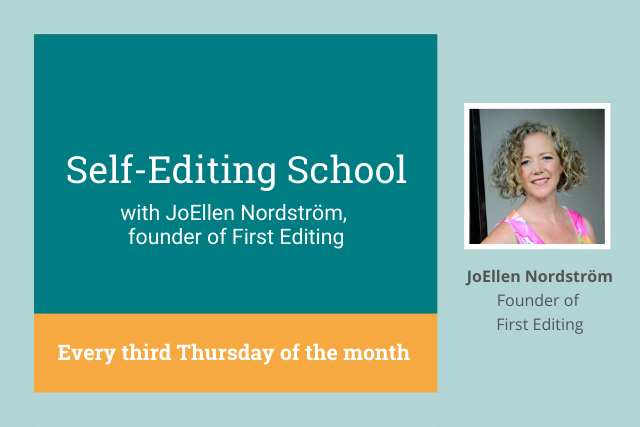Watch JoEllen's live training on How to Perform a Sentence-Level Copy Edit Effectively, then keep reading for more tips:
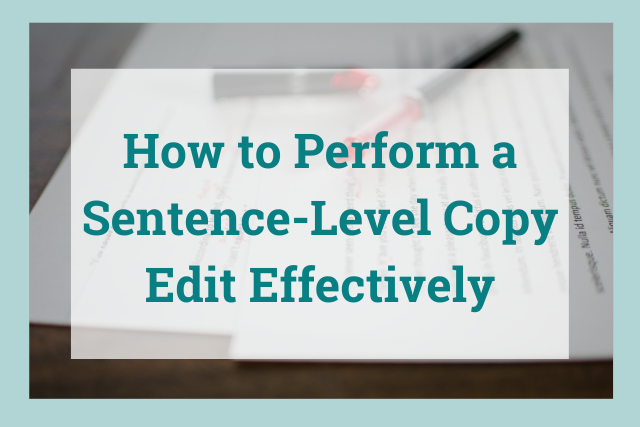
Once you have completed your manuscript’s outline, performed structural edits, and revised via line edits, it is finally time to copy edit. Today, I will explain how to perform a sentence-level copy edit effectively. We will also discuss some editorial techniques and tools you can use to improve your writing and editing skills.
What Are Sentence-Level Copy Edits?
Copy edits are the final edits performed before you format your manuscript.
These are editorial corrections of grammar, spelling, punctuation, use of language, syntax, and sentence construction. Thus, copy editing is all about knowing the rules and how to follow them (or break them) correctly.
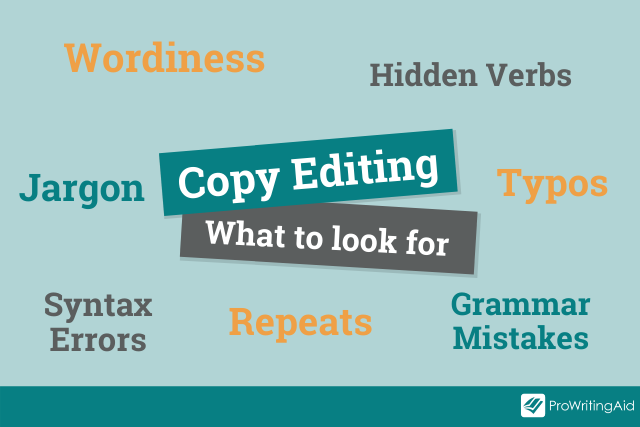
During your copy edit, you’ll look for wordiness and convoluted sentences, remove all jargon and imprecision, and prioritize simple sentences and clarity. This is also the stage where you will correct your grammar and syntax, so dust off that dictionary.
When you’ve been working with a manuscript for a while, it’s easy to miss repeated words, overly long sentences, slow pacing, and hidden verbs.
If you want to speed up your problem area identification process, begin with an editing tool such as ProWritingAid. Using this tool allows you to easily locate and correct the basic-level problems in your writing. You can use the time saved on poring over your manuscript with a highlighter to make meaningful changes.
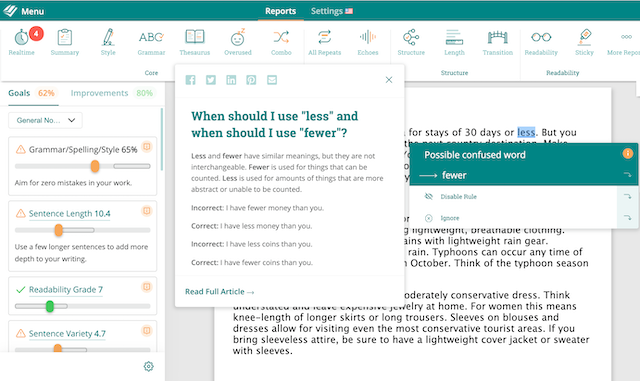
Review each recommended correction before accepting it. If you are unsure if the recommendation is the best choice for your manuscript, leave it highlighted for your professional copy editor to review during your final edit.
The Stages of a Sentence-Level Copy Edit
Your copy edit doesn’t have to happen in any particular order. It’s more a set of tasks you need to carry out on your work to make sure you’ve covered all bases.
Key sentence-level copy edit tasks:
- Look for wordiness and shorten
- Find convoluted sentences and simplify
- Remove jargon
- Be precise
- Focus on simplicity and clarity
- Correct all grammar and syntax
To help you with these tasks, review my Ten Common Editing Mistakes Authors Make and How to Fix Them and compare with your writing.
Download your free copy of 10 Common Editing Mistakes so you’ve always got it handy for reference.
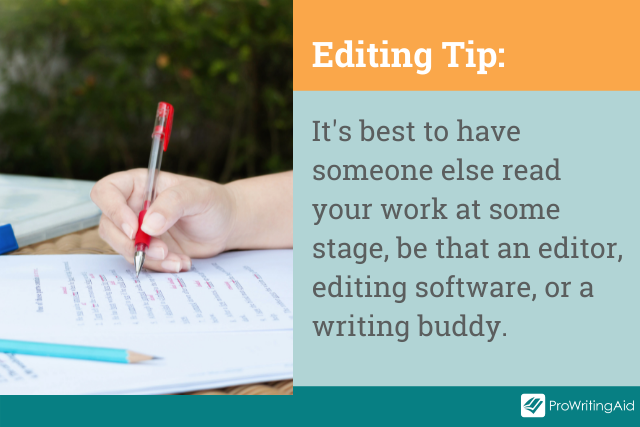
In the guide, we go in-depth on these editing issues:
- Grammar mistakes
- Misspelling and typos
- Punctuation errors
- Citation inaccuracy
- Writing weaknesses
- Word omissions and misuse of wrong words
- Structural blunders at different stages of writing and editing (sentence, paragraph, and developmental levels)
- Relying solely on software and/or tools
- Skipping straight to editing or editing while still writing
- Relying solely on self-editing techniques
If your goal is to self-edit your manuscript completely, attack each of these concerns. Grammar, spelling, and punctuation checks are a must. Nothing makes a reader lose confidence like a typo.
If you’re writing non-fiction, learn how to properly cite your references. You could get into trouble if you don’t.
Every writer is different, and so every writer has their own set of individual common writing errors. Take the time to learn yours so you know what you need to look out for on a first editing pass.
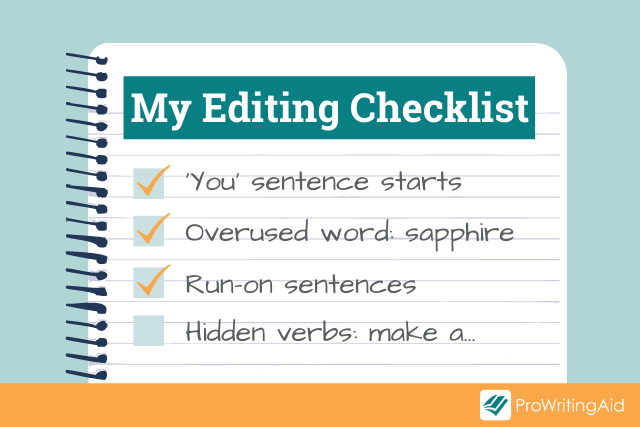
Create tailored review processes while editing so you can quickly locate and fix structural concerns. This could involve checking your sentence length variety or sentence starts to make sure you’re driving your reader forward. Use tools. Take your time.
Another resource for performing sentence-level edits online that I recommend is this Editing for Clarity and Grammar guide from Trent University. It outlines key steps and defines potentially unfamiliar terms.
Self-editing takes time and patience. Allow yourself the freedom to slowly learn grammar while improving your writing. Use tools to help you in your day-to-day work and reach for a professional copy editor when you are ready for your final review. These steps aren’t cheating—they’re helping you create the best possible end result.
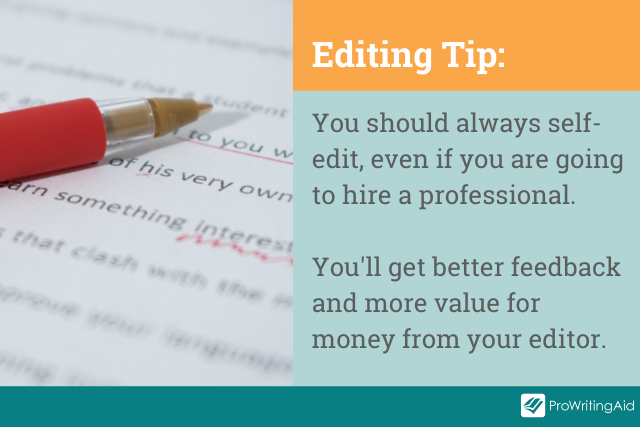
Always make sure that you compare editing services to determine that you are receiving exactly what you need. If you are uncertain, ask your editor for an editing sample and review. They will outline your strengths and weaknesses, while recommending a copy, line, or developmental edit depending on your specific needs.
When Should I Copy Edit?
Copy editing happens before typesetting or uploading your document for formatting. It will be a final review with simple revisions to awkward passages to prepare you for submission and/or publishing.
Copy editing does not include rewrites. It also does not provide correcting structural or organization problems within your manuscript. If you have questions or need assistance with these issues, you need to request a developmental or structural content edit.
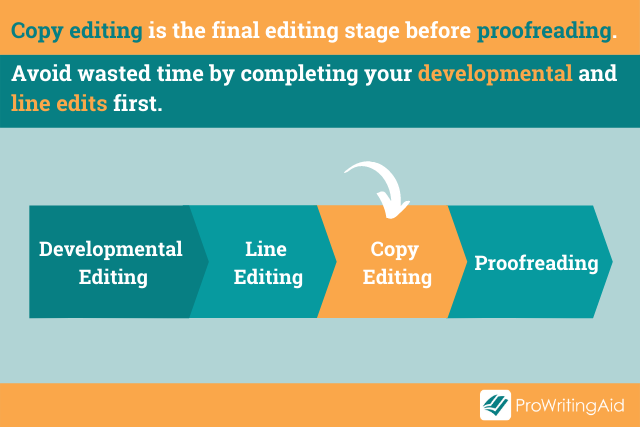
Because the copy edit is the final polish, you’ll want to make sure you are happy with the overall structure and content of your manuscript. Otherwise, you could waste time editing content that doesn’t make it into the final book.
Ready to learn more? Join us as we review the finer details in our live online Self-Editing School class. Details below.

